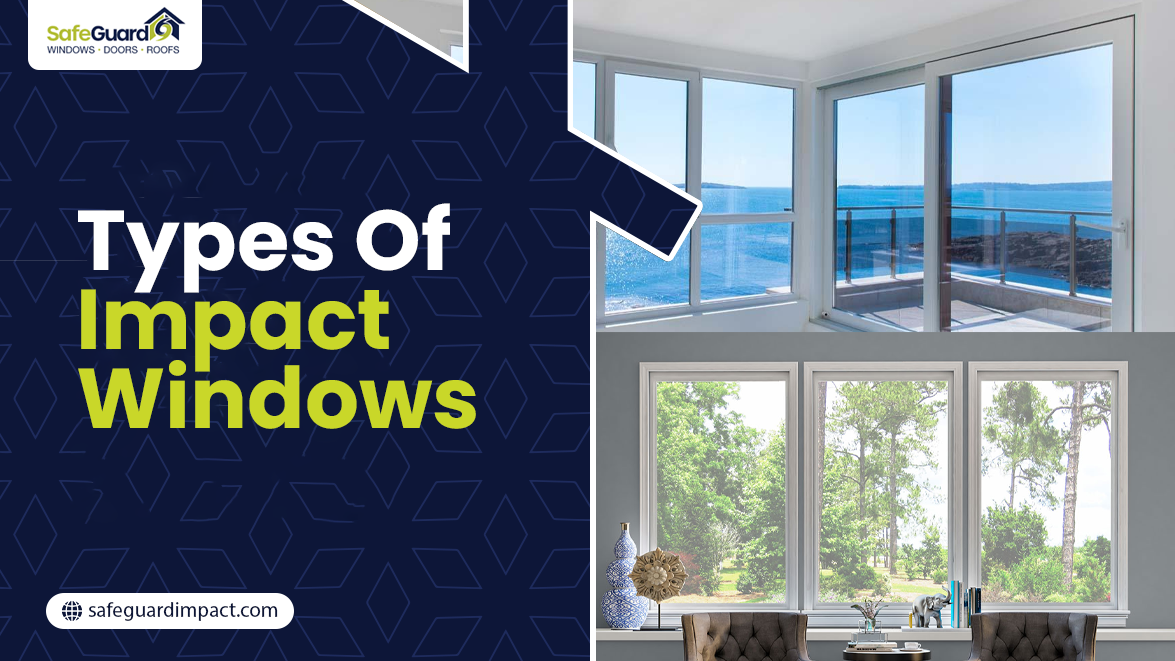If you’ve lived in Florida for even a single storm season, you already know what wind can do. The rain doesn’t just fall; it slants, hammers, and howls. And when that happens, your windows aren’t just decoration anymore. They’re your defense. That’s why impact windows exist — to stand firm when everything else bends.
Now, not every impact window is built the same. Some are made for airflow, some for tight spaces, and some just do their job quietly day after day. The three most common types you’ll find are Single-Hung, Casement, and Awning impact windows. Each protects your home, but in its own way. Let’s get into how they work and where they shine.
Common Types of Impact Windows
Every type of impact window has the same goal: keeping your home safe when the weather gets ugly. But the difference lies in how they open, seal, and breathe. The right choice depends on your layout, habits, and what matters most—air, light, or quiet.
Let’s take a closer look.
1. Single-Hung Impact Windows
These are the classic ones—the windows you grew up seeing. One pane stays fixed at the top, and the bottom sash slides upward when you want air. Nothing fancy—just a simple, solid design that works.
You’ll find single-hung windows in bedrooms, hallways, or smaller rooms — spaces where you need sunlight and a little breeze but don’t want a wide opening. They stay tight, keep noise out, and handle humidity without fuss. The laminated glass doesn’t shatter when hit; it holds, even if cracked. It’s dependable like an old friend who just shows up.
Why people keep choosing them:
- Easy to use. Open, close, done. No overthinking it.
- Quiet and sealed. Keeps the AC in, and the storm out.
- Strong under pressure. Reinforced glass that holds its ground.
- Low maintenance. Less to break, less to fix.
They’re the kind of window you forget about — until the day a storm hits, and you’re glad you didn’t.
2. Casement Impact Windows
Casement windows change the game a little. They’re hinged on the side and open outward like a door. You crank them open, and suddenly the air starts moving again. It’s fresh, it’s open, and it feels good.
They’re perfect for kitchens, open-plan living areas, and spaces that crave ventilation. When shut, they press tight against the frame, sealing out wind and water better than almost any other type. They also look modern with clean lines, big glass, and unobstructed views. It’s protection that doesn’t feel like a compromise.
What makes them a favorite:
- Full airflow. Opens wide enough to catch a real breeze.
- Strong lock system. Multi-point latches keep it sealed tight.
- Energy savings. Blocks drafts, reduces outside heat.
- Sleek and modern. They make rooms feel larger, lighter, and newer.
Casement windows are for people who want light, air, and strength. They look calm, but they’re ready for chaos.
3. Awning Impact Windows
Awning windows are small, but clever. They hinge at the top and open outward from the bottom like a canopy. That means you can keep them open during light rain and still get air without the mess. They’re the underrated heroes of Florida homes.
You’ll usually see them in bathrooms or higher wall spaces that need airflow, not a full open view. They work beautifully in pairs, too, above or below fixed windows to balance looks and function. Despite their size, they hold their own in a storm. The glass is tough, the frame is solid, and once they’re closed, they don’t budge.
Why do they just make sense:
- Rain-safe airflow. You get fresh air even in drizzle.
- Compact fit. Works where bigger windows can’t.
- Built to last. Strong materials, steady performance.
- Clean design. Subtle, neat, blends with everything.
Awning windows aren’t showy – they’re smart. The kind of quiet, reliable design that makes life easier without trying too hard.
Conclusion
When you line them up—single-hung, Casement, and Awning windows —they all do one thing perfectly: protect your home when it matters most. But they each have their rhythm. Single-hung windows keep things simple, steady, and timeless. Casement windows bring in the air, light, and a modern edge. Awning windows handle small, awkward spaces with clever practicality.
The best choice isn’t about which is stronger. It’s about what fits your space, your habits, and how you live. Many homeowners mix them up—single-hung in bedrooms, casements in open spaces, and awnings where airflow matters most. Together, they turn a house into a storm-ready home.
At Safeguard Impact, every window is designed to do exactly what it promises — protect, perform, and last. Whether it’s calm or chaos outside, your home stays quiet, clear, and safe.





